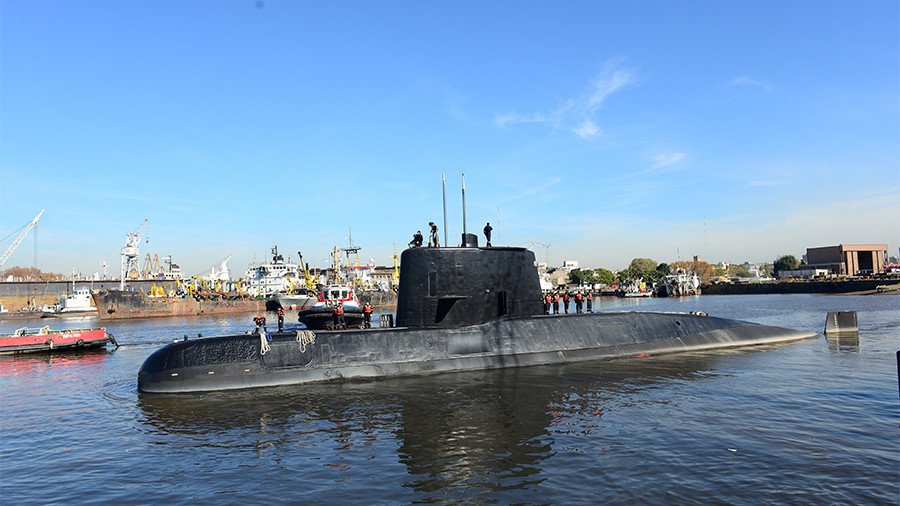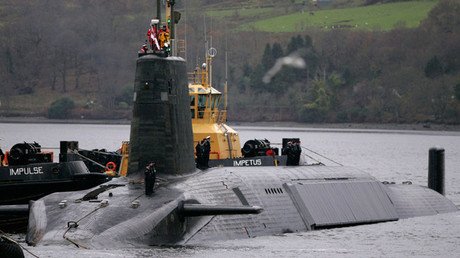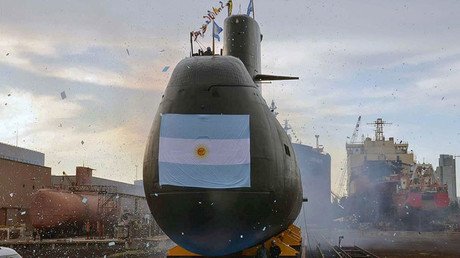Explosion & fire on Argentina’s San Juan sub blamed on low-quality German repair – reports

Two German companies are accused of supplying low-quality parts to the Argentinian Navy, German media say. The parts include batteries thought to have short-circuited inside the submarine ARA ‘San Juan’ that vanished in the Atlantic with 44 on board.
Ferrostaal and EnerSys-Hawker are the two companies suspected of delivering dysfunctional replacement batteries for the ‘San Juan’ through a vague corruption scheme, according to a report by German broadcasters Bayerischer Rundfunk and ARD.
The submarine, laid down in 1983 on German shipyards, underwent a major overhaul in 2011. Meant to give the ‘San Juan’ another 30 years of service, the overhaul included replacement of the vessel’s 964 battery cells. Both firms have signed a contract worth €5,000,000 to deliver the spare parts, but they may have secured it through corruption means, according to the media outlets.
Cornelia Schmidt-Liermann, head of the foreign affairs committee of the Argentinian Parliament, told ARD the authorities believe that bribes have been involved in securing the ‘San Juan’ repair contract.
In addition, there are indications that the batteries did not meet quality requirements, she told Bayerischer Rundfunk: “There is a suspicion that the batteries that have been replaced were not of the quality that they should have been.”
The MP noted that “we also do not know where they came from, Germany or some other country. We do want to know whose technicians were at the time there [on the submarine] and who signed [a document saying] ‘well, it’s fixed now’,” Schmidt-Liermann said. “We do not have this information, but we need to have it.”
This is not the first time Ferrostaal and EnerSys-Hawker have been in the spotlight. In 2010, both companies took part in a tender to deliver fast attack boats for Argentinian and Chilean navies. The deal did not take place, but bribes were allegedly still paid. At the time, Argentina opened a corruption probe into low-quality submarine batteries, but it ended in stalemate.
Rechargeable batteries are used to power electric engines on non-nuclear submarines. Normally, such subs use their diesel engine while sailing above water, only switching to the electric engine – which makes the vessel quieter and therefore less detectable – while submerged.
The ‘San Juan’s’ battery malfunction may explain a vicious chain of events that led to the submarine being sunk as the result of an on-board explosion. In late November, Argentinian media said the last communication between San Juan’s captain and the home base reported an on-board fire inside the battery compartment.
“Entry of sea water through the ventilation system into battery tank No 3 caused a short-circuit and the beginning of fire in the battery room. Bow batteries out of service. No updates on personnel, will keep informed,” said a short message from the captain, according to Clarin newspaper.
The reports were later confirmed by Navy spokesman Enrique Balbi, who told reporters at the time that the submarine had been ordered back to its home base at Mar del Plata after it reported water caused a battery short-circuit. “They had to isolate the battery and continue to sail underwater toward Mar del Plata, using another battery,” Balbi said.
Shortly after the last contact with the ‘San Juan’, international listening posts detected “a violent” underwater noise which the Argentinian Navy said could have been the submarine exploding.
The search for the 65-meter (213ft) diesel-electric submarine concentrated in an area about 430 km (267 miles) off Argentina’s southern shores. The effort included ships and aircraft manned by personnel from 13 countries. On November 30, Argentina abandoned attempts to rescue the 44 crew, effectively ending the search mission.















